Apple accelerates its journey to carbon neutral supply chain
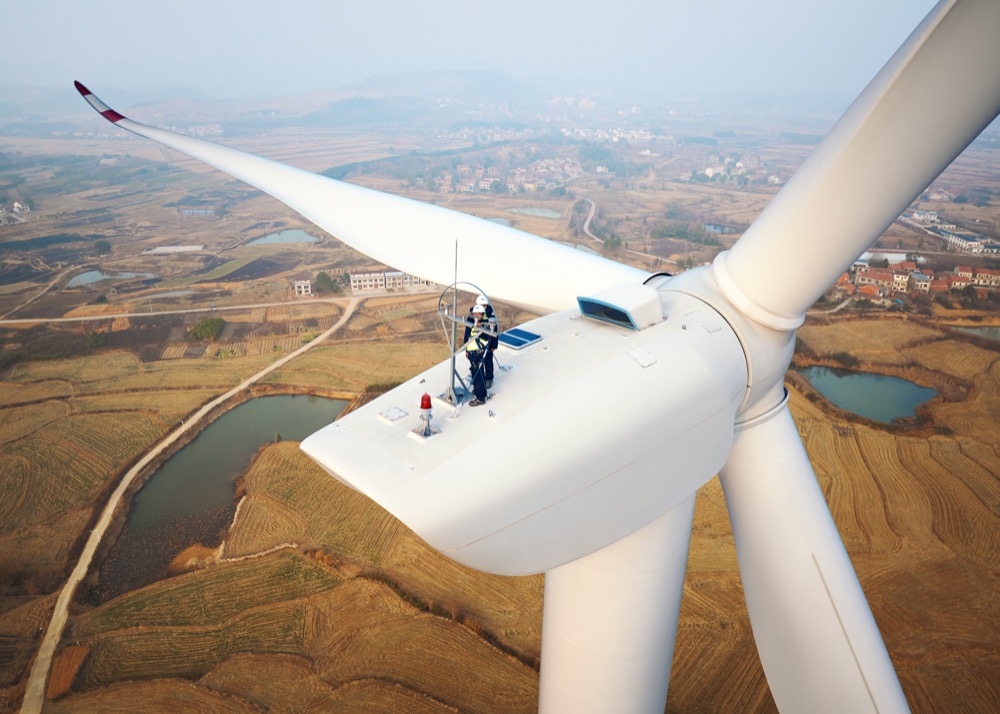
Apple is pushing really hard to make its whole business completely carbon neutral, and achievements include a 500% increase in use of renewable energy across its global supply chain, the company said.
The journey to carbon neutrality
The company says that it has managed to expand the quantity operational renewable energy in use across Apple’s global supply chain by a magnitude of five since 2019. Its operations now use over 13.7 gigawatts of renewable energy across the chain, which is up 30% on last year.
Apple’s latest update into its work to transform into a carbon neutral business also reveals that over 250 of its global manufacturing partners are decarbonizing their Apple production by 2030. This represents more than 85 percent of the company’s direct manufacturing spend and more than 20 gigawatts in commitments.
What Apple said
“At Apple, we’re carbon neutral for our own operations and innovating every day to go even further in the urgent work to address climate change,” said Tim Cook, Apple’s CEO.
“With partners around the world, we’re adding even more renewable energy to power our global supply chain and investing in next-generation green technologies. The scale of this challenge is immense — but so is our determination to meet it.”
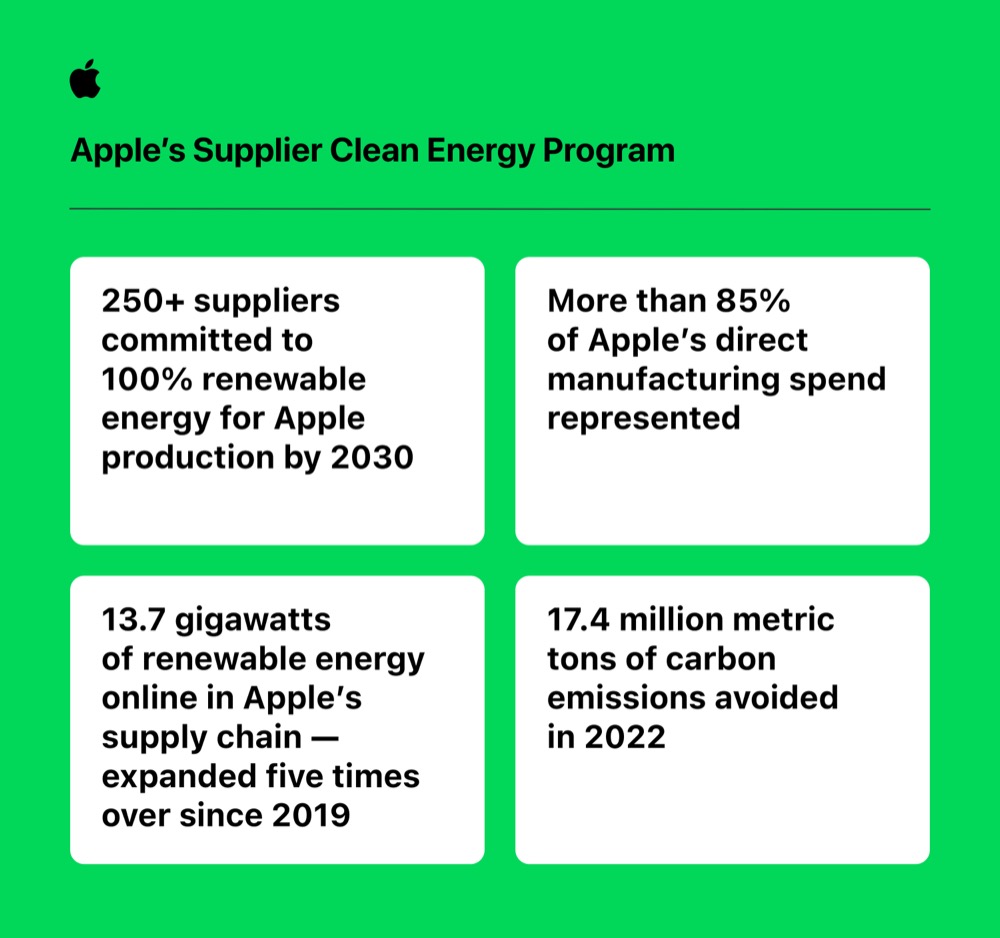
“Our new supplier commitments demonstrate the rapid pace of progress we’re making toward our 2030 carbon neutrality goal,” said Lisa Jackson, Apple’s vice president of Environment, Policy, and Social Initiatives. “We are taking urgent action on a global scale to unlock a greener, more innovative, and more resilient future.”
What Apple does
The company is already carbon neutral for its global corporate emissions and continues working toward becoming carbon neutral for every product by 2030. To help achieve this it is financing clean energy solutions and emissions reduction worldwide through its $4.7 billion Green Bonds scheme.
More than 40 manufacturing partners joined Apple’s Supplier Clean Energy Program in the last year. Apple has called on its suppliers to decarbonize all Apple-related operations, including sourcing 100 percent renewable electricity. To support this the company works with its suppliers and provides free learning resources and live training through its Clean Energy Academy.
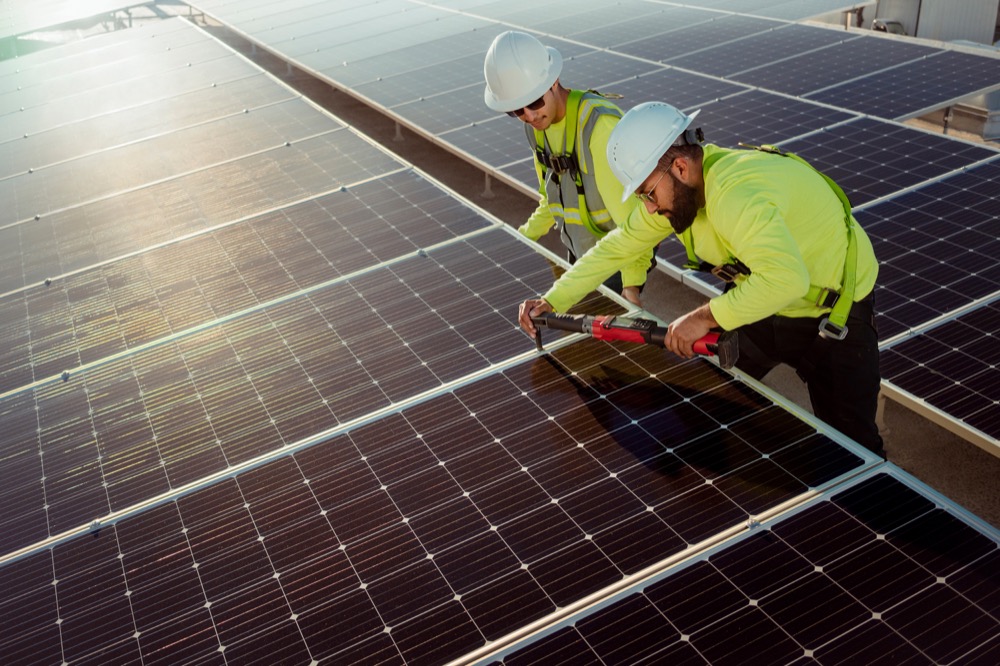
Reducing the carbon footprint
Supplier members of the company’s Supplier Clean Energy Program now use 13.7 gigawatts renewable energy. That’s estimated to mean 17.4 million metric tons of avoided carbon emissions last year — just like taking 3.8 million cars off the road,
Apple also supports about 1.5 gigawatts of renewable electricity around the world to power all corporate offices, data centers, and retail stores, spanning 44 countries. It has also invested directly in nearly 500 megawatts of solar and wind in China and Japan to address upstream supply chain emissions.
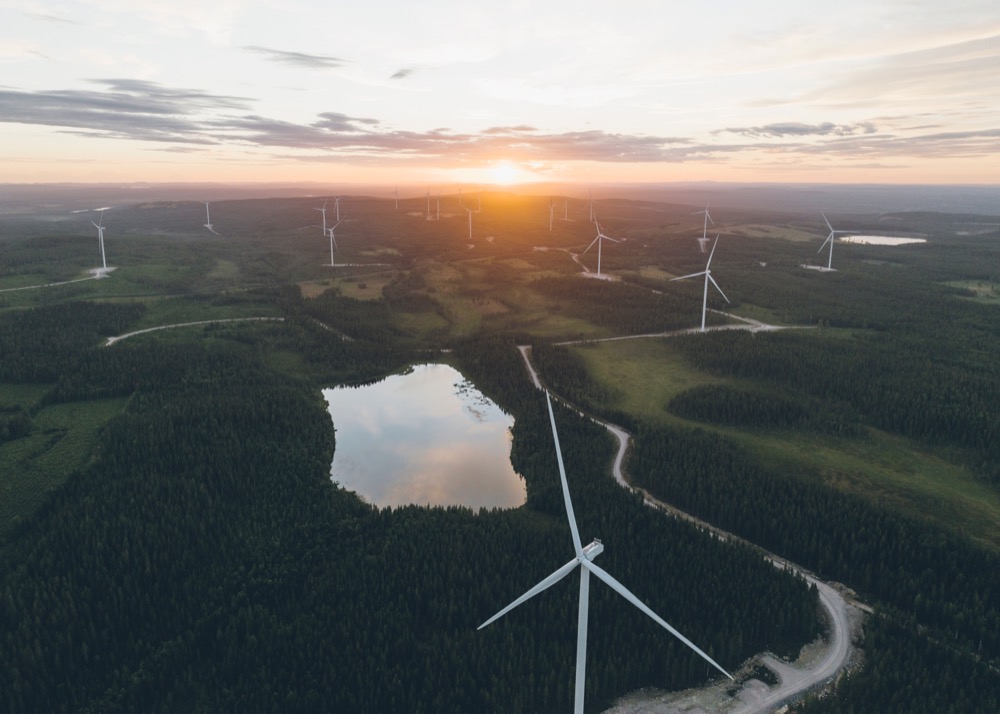
What Apple’s Green Bonds are achieving
Apple has disbursed over $3.2 billion of the company’s $4.7 billion Green Bond commitment to date — including the total $2.5 billion of its first two bonds. So far, the company has allocated $700 million of the proceeds from the 2019 Green Bond to support 59 projects — including the development and distribution of clean energy training resources for suppliers and collaborative advocacy efforts in Japan, Vietnam, and South Korea.
The projects supported by the 2019 Green Bond are expected to mitigate more than 13.5 million metric tons of carbon dioxide over their lifetime.
Apple’s Green Bond investments last year supported a range of environmental innovation across the business, including low-carbon design, energy efficiency, and the expansion of renewable energy in grids around the world.
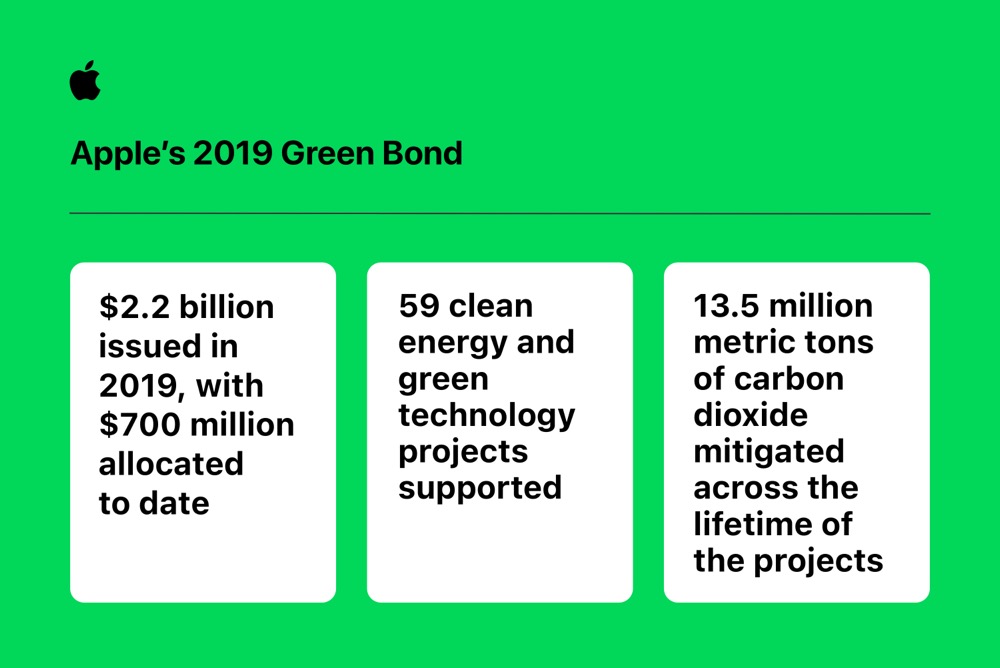
For example, the 2019 Green Bond helped fund the IP Radian Solar project in Brown County, Texas that now produces 320 megawatts of electricity. Apple invested in the project to help address the carbon impact of the energy Apple customers use to charge their devices.
The bond also supported the company’s utility-scale battery located at the California Flats Solar Project in Monterey, California, which became operational in 2022. The large battery stores up to 240 megawatt-hours of renewable electricity for later use, when the carbon intensity of the grid is highest.
For more information on Apple’s Green Bond efforts, visit investor.apple.com/Apple_GreenBond_Report.
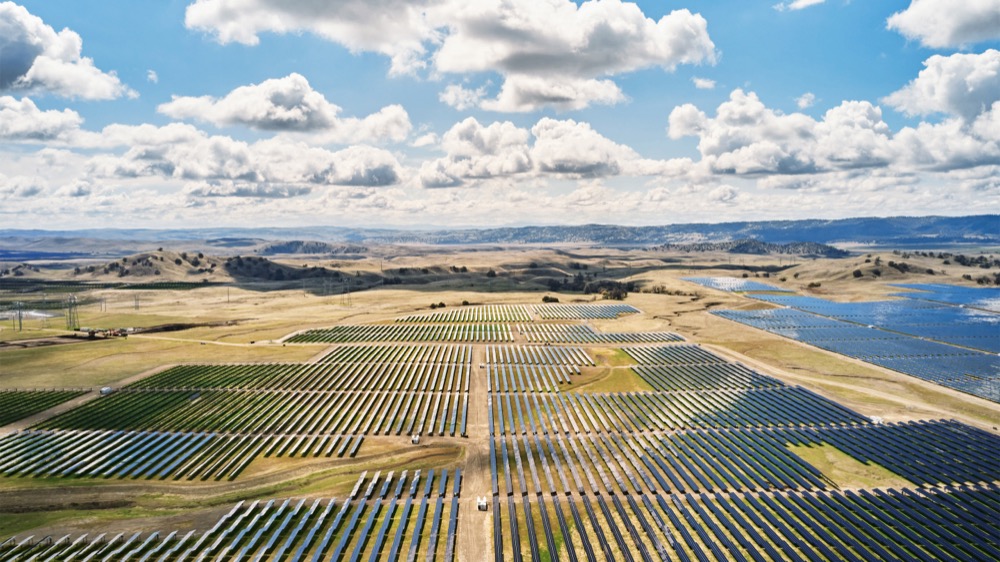
Global highlights
Apple also provided a whistle stop tour through some of the work its supplier partners are doing.
In the US,
Suppliers including Bemis Associates have achieved 100 percent renewable electricity for all Apple-related production, Coherent Corp. is nearing that goal through the use of a green utility program, while others including Qorvo are using power purchase agreements (PPAs) for solar and wind projects across the country.
In China,
Nearly 70 suppliers in China are now committed to 100 percent renewable electricity. Avary Holding, which joined the program in 2020, is launching its own initiative to help drive scalable action by having its suppliers adopt renewable energy and decarbonize. Proceeds from the 2019 Green Bond contributed to Apple’s investment in the China Clean Energy Fund to connect suppliers in China with renewable energy sources. Apple and its suppliers have now jointly invested in over 650 megawatts of renewable electricity.
In Europe,
30 European manufacturing partners are committed to clean energy, with six — including Viscom AG and Victrex — already achieving 100 percent renewable electricity for their Apple loads. Bosch Sensortec GmbH, which recently joined Apple’s Supplier Clean Energy Program, and VARTA Microbattery GmbH are achieving 100 percent renewable electricity through green utility power.
In Japan,
34 manufacturing partners have committed to procure 100 percent renewable energy for their Apple production. Businesses like Taiyo Holdings Co., Ltd. are deploying onsite solar solutions, and other companies are using PPAs as availability increases. This includes Rohm Company Limited and Nissha Co., Ltd., which both joined the Supplier Clean Energy Program this year. Apple and its partners also continue to work together in support of wider deployment of affordable clean energy through collaborations such as the Japan Climate Leaders’ Partnership.
In South Korea,
Apple continues to call for an ambitious 2030 national renewable energy target, and engage in collaborative advocacy to improve transparency and expand cost-effective options, especially PPAs. In total, 18 businesses headquartered in South Korea are now part of the Supplier Clean Energy Program, with LG Innotek using onsite solar to help meet its commitments and SK hynix having achieved 100 percent renewable energy for its Apple production in the country.
Please follow me on Mastodon, or join me in the AppleHolic’s bar & grill and Apple Discussions groups on MeWe.




